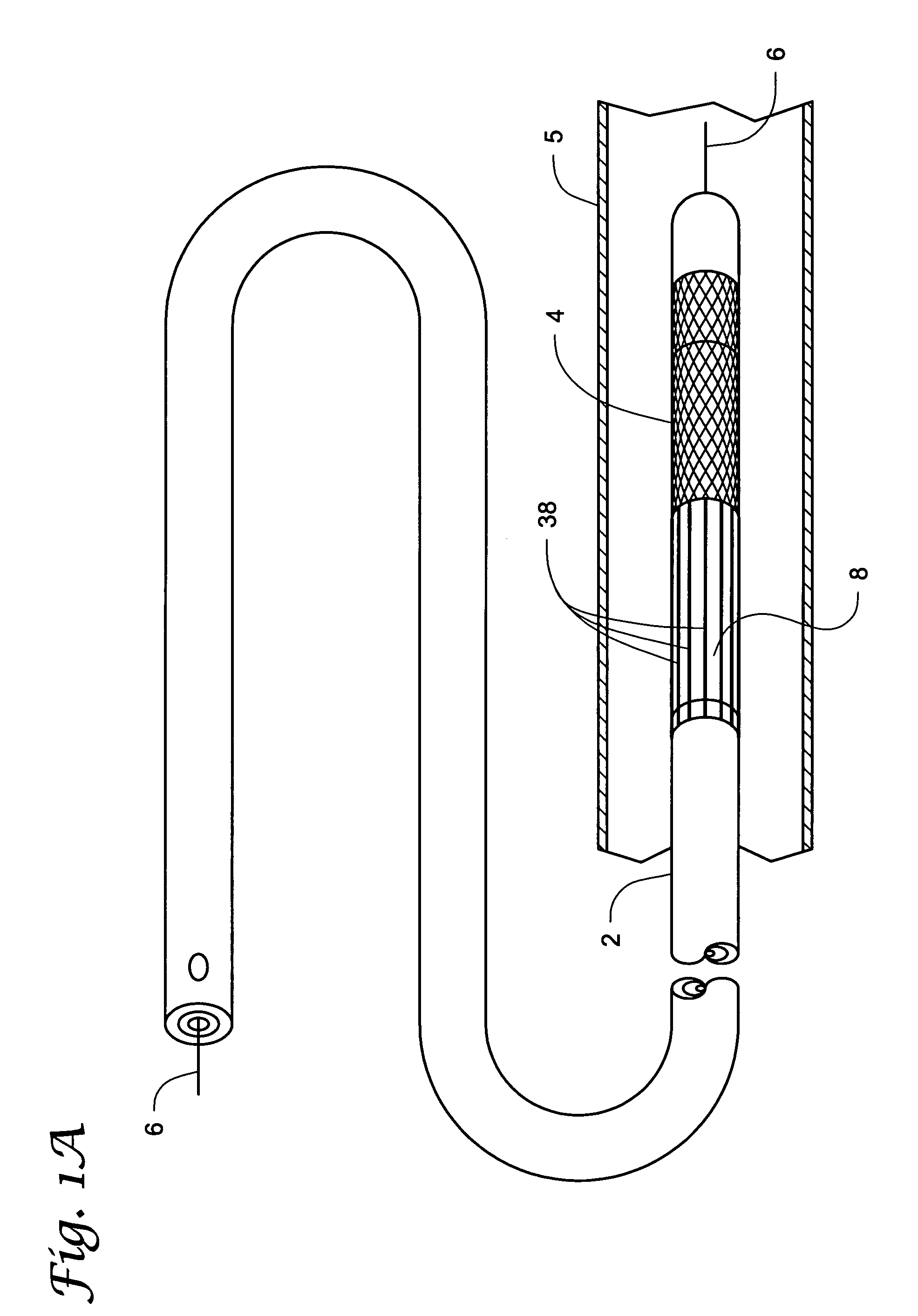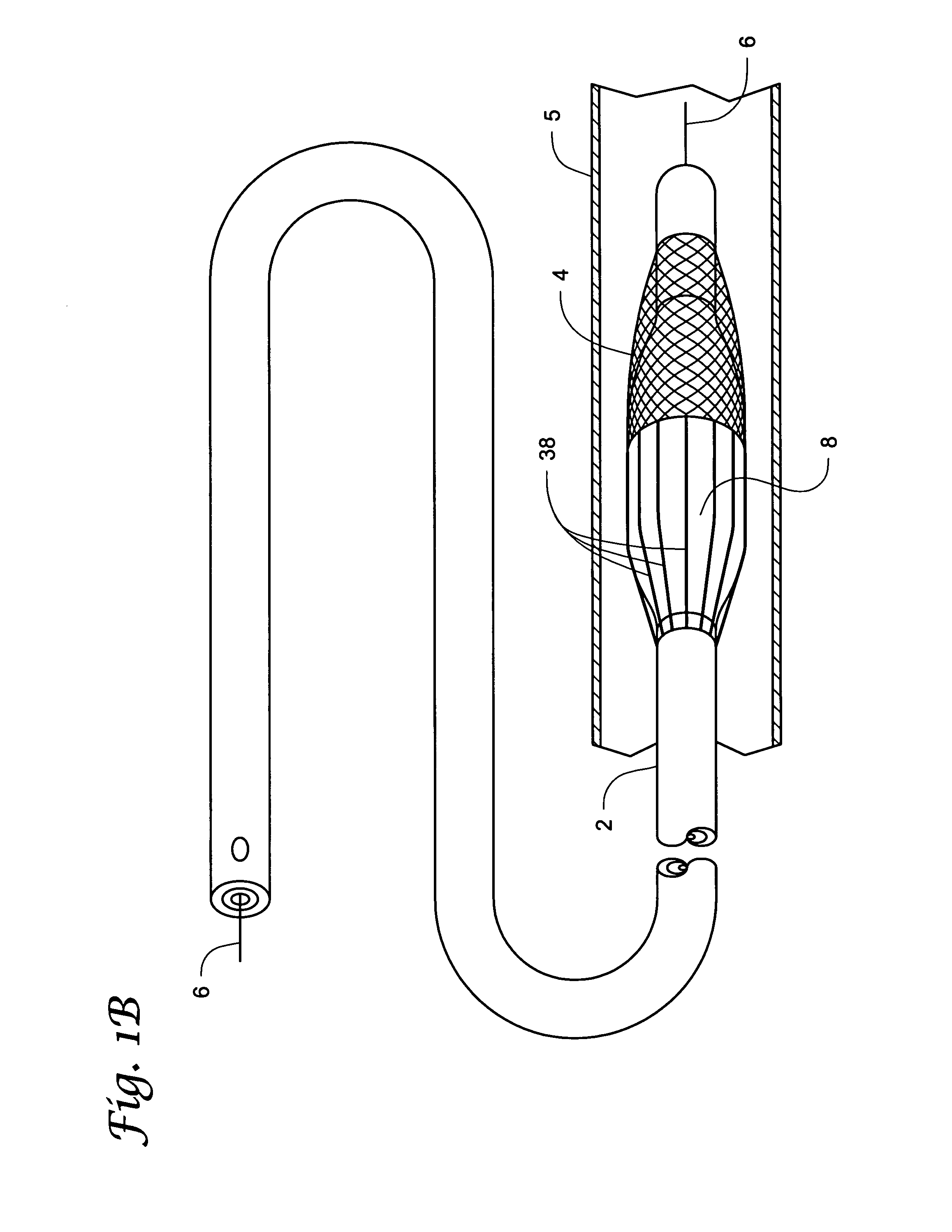Medical device and method of intravenous filtration
a technology of intravenous filtration and medical devices, which is applied in the field of medical device catheters, can solve the problems of percutaneous transluminal devices and dislocation of embolic particles that occur
- Summary
- Abstract
- Description
- Claims
- Application Information
AI Technical Summary
Benefits of technology
Problems solved by technology
Method used
Image
Examples
Embodiment Construction
[0041]Percutaneous transluminal devices have been successfully used in treating thrombotic or atherosclerotic lesions in blood vessels. These devices include those for directional atherectomy and coronary angioplasty with or without stent deployment. In addition to being used in angioplasty, stenting, and / or atherectomy in the tubular conduits (e.g., blood vessels), percutaneous transluminal devices have also been used in treating other vascular lesions associated with, for example, carotid artery stenosis, arterial occlusive disease (especially the aorta, the iliac artery, and the femoral artery), renal artery stenosis caused by atherosclerosis or fibromuscular disease, superior vena cava syndrome, and occlusive iliac vein thrombosis resistant to thrombolysis.
[0042]One complication common to use of percutaneous transluminal devices is the dislodgment of embolic particles that occur during the treatment of the lesion in the blood vessel. This dislodgement of embolic particles has th...
PUM
 Login to View More
Login to View More Abstract
Description
Claims
Application Information
 Login to View More
Login to View More - R&D
- Intellectual Property
- Life Sciences
- Materials
- Tech Scout
- Unparalleled Data Quality
- Higher Quality Content
- 60% Fewer Hallucinations
Browse by: Latest US Patents, China's latest patents, Technical Efficacy Thesaurus, Application Domain, Technology Topic, Popular Technical Reports.
© 2025 PatSnap. All rights reserved.Legal|Privacy policy|Modern Slavery Act Transparency Statement|Sitemap|About US| Contact US: help@patsnap.com



